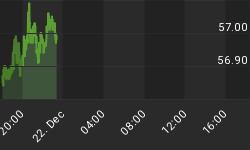Econoday Commented:
The non-residential sector gets a downgrade in today's construction spending report where the headline increase, at 0.3 percent in September, nevertheless beats the consensus by 3 tenths. Private non-residential spending, however, fell a steep 0.8 percent following a sharply downward revised 0.7 percent decline in August. Year-on-year, this reading is down 3.8 percent with weakness most evident in manufacturing and office building that offsets gains for commercial building.
The residential side, though unchanged in September, shows much more strength with a year-on-year rise of 9.6 percent. Spending on both new single-family and new multi-family homes actually increased in the month, up 0.2 and 0.6 percent respectively, but spending on home improvements fell back 0.6 percent.
Public spending improved in the month led by a 5.2 percent gain for educational building. Highway & street spending rose 1.1 percent in the month but the yearly decline is still steep at 7.4 percent. Both Federal and state & local spending rose in the month but are down in the low single-digits on the year.
Total Construction Spending
Commercial Construction
Residential construction peaked in February of 2006 at $698,903 million. Today residential construction is at $521,445 million, a decline of 25.4% despite 11.5 years of recovery.
Non-residential construction peaked at $714,495 million in October of 2008. It exceeded that total from June 2016 thru May 2017.
Commercial construction has still not topped the $98,845 million high in February of 2008. Commercial construction spending has declined every month since the the May 2017 rebound peak.
Commercial construction includes office space and retail stores, both drivers of job growth. Every Walmart that goes up creates construction job, stocking jobs, and permanent employees to man the stores. Weekly shipments crate trucking jobs.
Residential and non-residential construction show signs of rolling over, with obvious implications. If so, don't count on hurricanes to save the day.
By Mike Shedlock



















